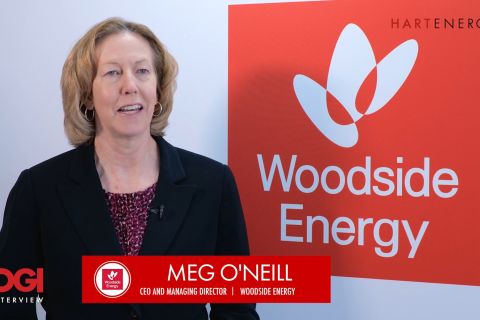Eni will expand its renewable energy in Europe, the U.S. and the Pacific by developing its own projects and making small acquisitions, the group’s clean energy head said on Dec. 4.
Eni, which currently has a renewable energy capacity of only 350 megawatts, has pledged to reach 15 gigawatts by 2030 and 55 GW by 2050—mainly by building its own capacity.
“We'’e virtually starting from scratch so we’ll need a lot of greenfield development along with some small M&A to get to our 2030 target,” Massimo Mondazzi told Reuters. “You’ll see new projects coming through in the months to come.”
“We're targeting Europe where we’d like to serve our clients with the renewable energy we produce but also the U.S., Australia and some growing areas in the Pacific region.”
Eni took a first step into offshore wind on Dec. 4, spending 405 million pounds (US$548 million) to buy 20% of the 2.4 GW Dogger Bank project off the British coast, which is set to be the largest in the world.
Mondazzi said Eni did not plan to splash out on acquisitions but would do small deals to enter new markets and technologies, adding it could also buy small retail portfolios to boost returns and create platforms to offer new services.
He acknowledged pay-back times on green businesses could be longer than with oil and gas but said they were far less capital intensive.
Some analysts have commented that getting good value renewable deals can be difficult since the assets are sought after and sell at high prices.
In October, Total’s CEO said a bubble was forming in the M&A market for renewable power projects.
The company will hold on to its solar power business in Australia, where it is currently selling gas assets, as a platform for growth.
“It’s an interesting country and we want to build up additional renewable assets there and maybe connect some clients to these assets,” he said.
Mondazzi, till recently Eni CFO, was appointed head of a new Energy Evolution division created earlier this year to look after renewables and other clean energy businesses like biorefineries and hydrogen.
Eni, one of the biggest foreign oil and gas producers in Africa with operations also in Latin America, has pledged to slash its greenhouse gas emissions by 80% in one of the industry’s most ambitious clean-up drives.
It will allocate 25% of its capex to clean energy in 2023 with oil and gas making up the lion’s share. But that will change.
“After 2025 oil production will decrease and gas will plateau. It’s likely that by 2030, 50% of spending will be on our energy transition lines,” Mondazzi said.
Eni’s existing oil and gas reserves, in the portfolio at around $50/barrel, are expected to generate 94% of their overall value by 2035.
“We have a small exposure to stranded asset risks and we’re super careful anyway on what assets we develop,” he said.
($1 = 0.7390 pounds)
Recommended Reading
Deepwater Roundup 2024: Offshore Australasia, Surrounding Areas
2024-04-09 - Projects in Australia and Asia are progressing in part two of Hart Energy's 2024 Deepwater Roundup. Deepwater projects in Vietnam and Australia look to yield high reserves, while a project offshore Malaysia looks to will be developed by an solar panel powered FPSO.
The OGInterview: How do Woodside's Growth Projects Fit into its Portfolio?
2024-04-01 - Woodside Energy CEO Meg O'Neill discusses the company's current growth projects across the globe and the impact they will have on the company's future with Hart Energy's Pietro Pitts.
US Drillers Cut Oil, Gas Rigs for Fourth Week in a Row-Baker Hughes
2024-04-12 - The oil and gas rig count, an early indicator of future output, fell by three to 617 in the week to April 12, the lowest since November.
E&P Highlights: April 1, 2024
2024-04-01 - Here’s a roundup of the latest E&P headlines, including new contract awards.
US NatGas Output to Decline in 2024, While Demand Rises to Record High, EIA Says
2024-04-09 - The EIA projected dry gas production will ease in 2024 as several producers reduce drilling activities.



